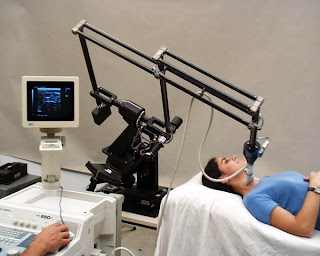All physicians have some sort of cream that they use for
their hands, in terms of interventional procedures. Often times procedures
require some manner of diagnostic
imaging to serve as a guide for the physician. When it comes to just actual
procedures there is a legitimate concern in terms of exposure to radiation. If
an interventional radiologist has to run multiple tests per procedure there is
a concern.
Radiation exposure is not just an issue for patients; in
fact it’s a big issue for radiologists and their staff as well. Doses of
radiation repeated over a lengthy period of time can expose someone to risks
such as cancer.
BloXR's Ultra Blox x-ray attenuating cream, as the hand cream is known, is a mix of bismuth oxide
with hand lotion. The level of protection is well backed by research and the
cream did get an FDA clearance.
The advantage of the cream is that it allows interventional
radiologists more time and freedom to focus on their task. Sure cream may not
seem like such a big deal but when dealing with patient well being and personal
peace of mind it’s vital to take every little advantage that you can.
An article about it best describes it “The procedure can
last two or three hours, and the operator is getting irradiated for that length
of time. Yes, it's always a concern when the patient is getting irradiated, but
patients hopefully get irradiated at the most once or twice in their lifetime.
The problem with clinicians is they're chronically exposed for 30 to 40 years...
and it becomes potentially a long-term chronic exposure problem." Exposure
really is a danger that affects clinicians.
This new cream is the kind of advancement that’s not necessarily high
tech but it really helps. Not everything is a high tech innovation in
particular modalities.
If you have any questions about diagnostic imaging procedures please
feel free to give us a call. We here at Clermont Radiology look forward to
answering any questions you may have.
Charla
Hurst
References:



















